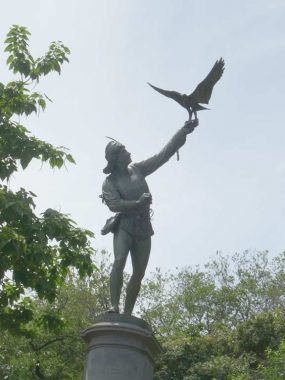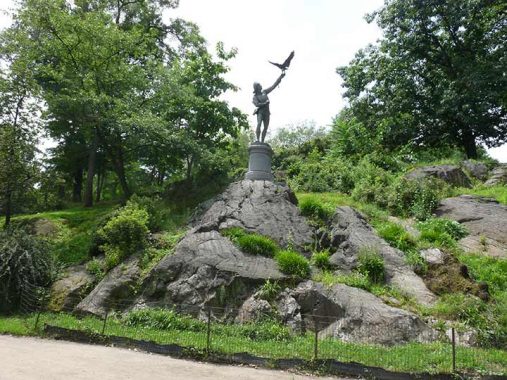
FALCONRY is the art of training birds of prey to catch game (in which they are instinctually adept) and bring them back to the trainer, or falconer. Small game such as rabbits and fowl are the most frequently sought prey, and falconers most commonly employ falcons (natch) and hawks, related species, and less frequently owls and eagles. Falconry has been practiced worldwide and originated in the Fertile Triangle of Mesopotamia, today’s Iraq, in ancient times. Owls must be trained differently than hawks as they hunt by sound rather than sight (I was surprised to learn this, given owls’ large eyes.)
British sculptor George Blackall Simonds (1844-1929) was himself an avid falconer and was commissioned in 1875 to create this sculpture, “The Falconer,” for a Royal Academy exhibition in Trieste, Italy, in 1875. There, an Irish art collector named George Kemp admired the work so much that he, in collaboration with the city, had a copy produced for Central Park. The Elizabethan-era-clad (1500s) falconer stands with his charge on the south side of the 72nd Street Transverse Road near Cherry Hill a little west of Bethesda Terrace.

Over the years, the man and his bird have been subject to the predations of weather and vandals; it had to be shored up as early as 1937, and the falcon had to be replaced in 1957 and 1982, with the falconer’s arm in the latter year. For some time, the statue had to be retired into storage. In 1995, it was rebronzed and restored to its old perch. Of course real peregrine falcons and hawks such as the famed Pale Male have also made their homes in the park.
As always, “comment…as you see fit.” I earn a small payment when you click on any ad on the site.
7/20/23
